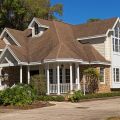Building Materials and Mold: Which Are Most Susceptible?
When it comes to mold growth, no building is completely immune. Mold spores exist everywhere in the environment, waiting for the right combination of moisture, organic material, and warmth to thrive. The materials used in construction can significantly influence how quickly and severely mold develops. Understanding which materials are most vulnerable helps homeowners and property managers take preventative steps to protect their investments.
For Bay Area residents, where humidity and water damage from leaks or storms are common, professional mold inspection and mold testing are essential. With decades of experience, certified mold inspector Rick Bruce and his team at Bay Area Mold Pros help identify risks, detect hidden mold, and provide tailored solutions to safeguard homes and commercial properties.
Why Some Materials Attract Mold More Than Others
Mold feeds on organic matter—anything containing cellulose, starch, or natural fibers. Porous materials that absorb water easily create an ideal environment for mold colonies. Non-porous materials, on the other hand, resist absorption and are less likely to sustain mold growth unless they remain wet for long periods.
Building Materials Most Susceptible to Mold
1. Drywall and Gypsum Board
Drywall is one of the most mold-prone materials because it is highly porous and made with cellulose-based paper facing. Even small leaks or high humidity can lead to visible mold patches. Once contaminated, drywall often needs to be replaced since mold penetrates deep inside.
2. Wood and Plywood
Wood framing, beams, and plywood sheathing provide a natural food source for mold. When exposed to leaks or condensation, wood can quickly absorb moisture. Long-term mold growth weakens the structural integrity of wooden components, making professional inspection critical.
3. Insulation (Fiberglass & Cellulose)
Cellulose insulation is particularly vulnerable since it is made from recycled paper. Fiberglass insulation is less mold-prone but can still harbor mold if it stays wet, trapping spores within its fibers and spreading them through air circulation.
4. Carpeting and Padding
Carpets, rugs, and underlayment are highly absorbent. Flooding or even minor spills can lead to mold hidden deep within carpet fibers or pads. Since mold is difficult to remove entirely from carpet, replacement is often recommended.
5. Ceiling Tiles
Acoustic ceiling tiles, commonly used in basements and commercial spaces, are lightweight and porous. They absorb moisture easily and are difficult to clean, making them prime targets for mold growth.
6. Wallpaper and Adhesives
Wallpaper can trap moisture between its surface and the wall, creating hidden mold colonies. Mold can also feed on the starch in wallpaper glue, making it a double risk factor.
7. HVAC Systems
Though not a traditional building material, HVAC ducts and components can harbor mold if condensation builds up. Once inside, spores spread throughout the property, affecting indoor air quality.
Materials Less Susceptible to Mold
-
Metal, Glass, and Plastic – Non-porous and resistant to mold, but mold can grow on surface dust or debris.
-
Concrete and Brick – Mold does not feed on these materials, but cracks or porous areas that hold moisture can support growth.
-
Ceramic Tile and Stone – Usually mold-resistant, but grout lines and adhesives may still be vulnerable.
Mold Prevention Tips for Building Materials
1. Control Moisture – Fix leaks promptly and use dehumidifiers in damp areas.
2. Choose Mold-Resistant Materials – Mold-resistant drywall, treated wood, and waterproof insulation are available.
3. Ensure Proper Ventilation – Bathrooms, kitchens, and basements need airflow to stay dry.
4. Seal and Protect Surfaces – Use waterproof coatings and sealants where appropriate.
5. Schedule Regular Mold Inspection and Mold Testing – Professional services help identify hidden risks before major damage occurs.
Why Professional Mold Testing Matters
Even if your home or building looks fine on the surface, mold often grows behind walls, under flooring, or inside HVAC systems. Professional testing from Bay Area Mold Pros ensures accurate identification of mold species, detects hidden infestations, and provides a clear remediation plan.
Final Thoughts
The type of building materials used in your home or property can make the difference between a minor mold issue and a major structural problem. Drywall, wood, insulation, carpet, ceiling tiles, and wallpaper are among the most susceptible materials, while concrete, metal, and glass are more resistant.
To protect your Bay Area property, trust certified mold inspector Rick Bruce at Bay Area Mold Pros. With expert mold inspection and mold testing, you’ll gain peace of mind knowing your property is safe from hidden mold threats.
Call (650) 762-6228 today to request an inspection, or visit bayareamoldpros.com


.jpg)




